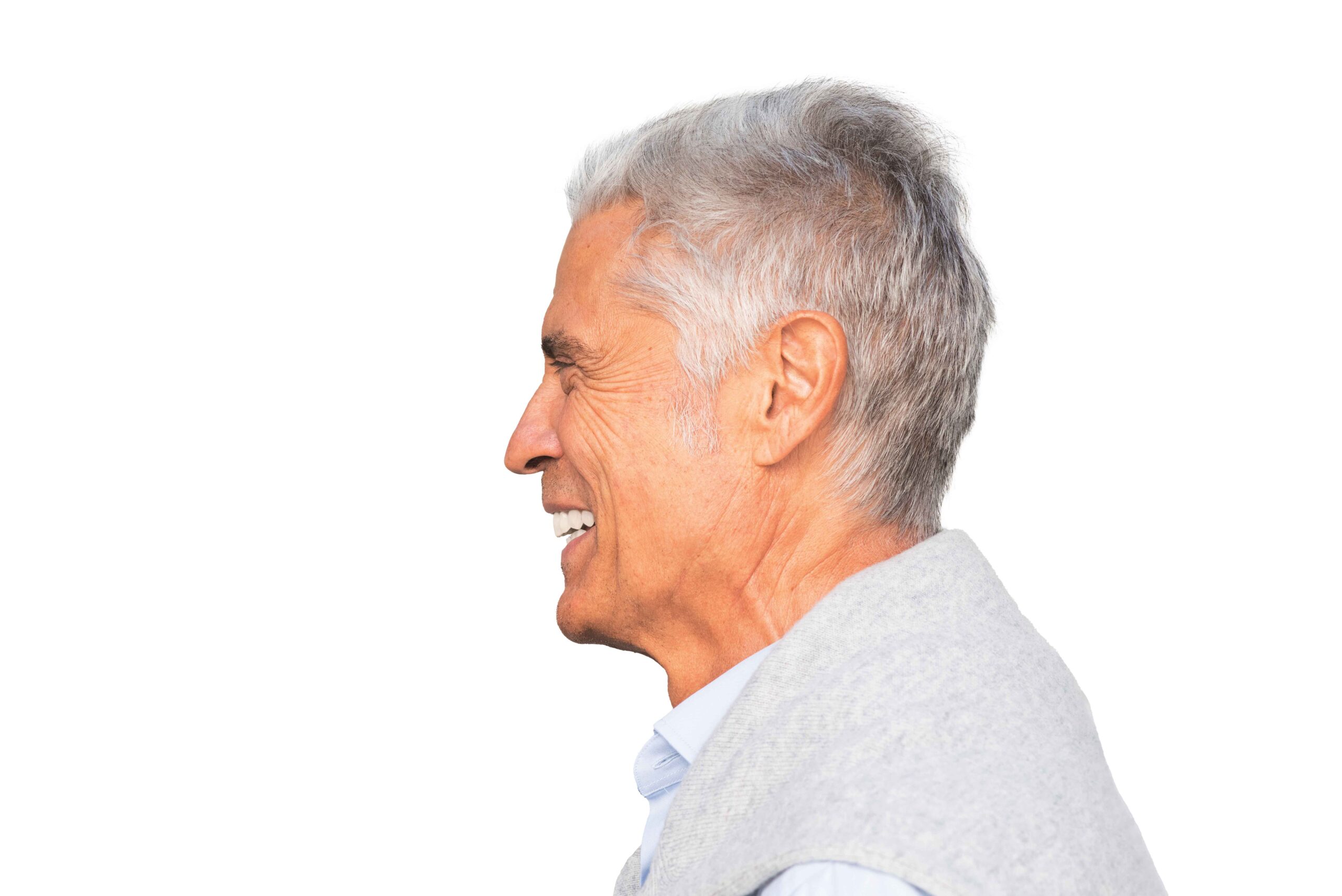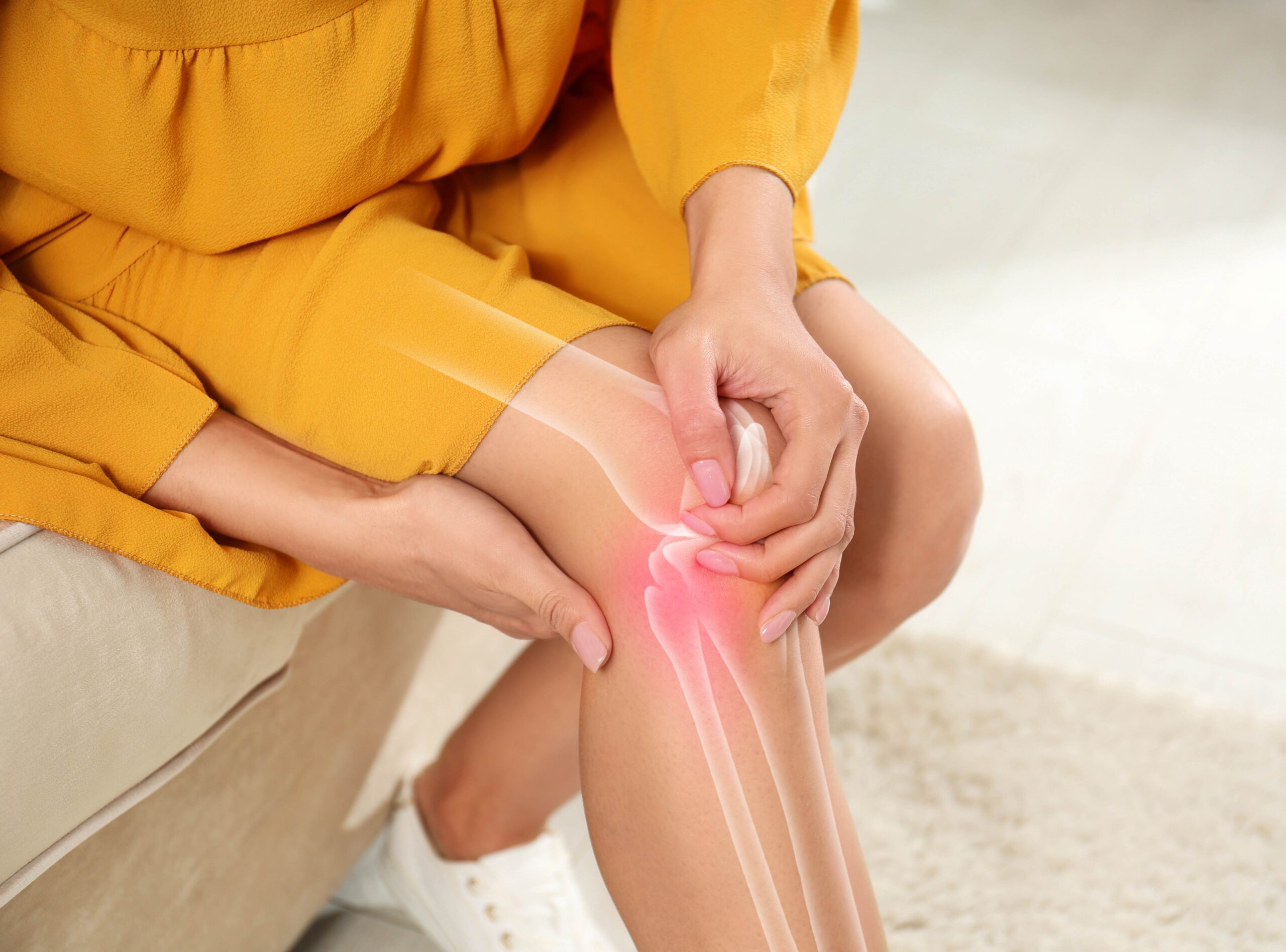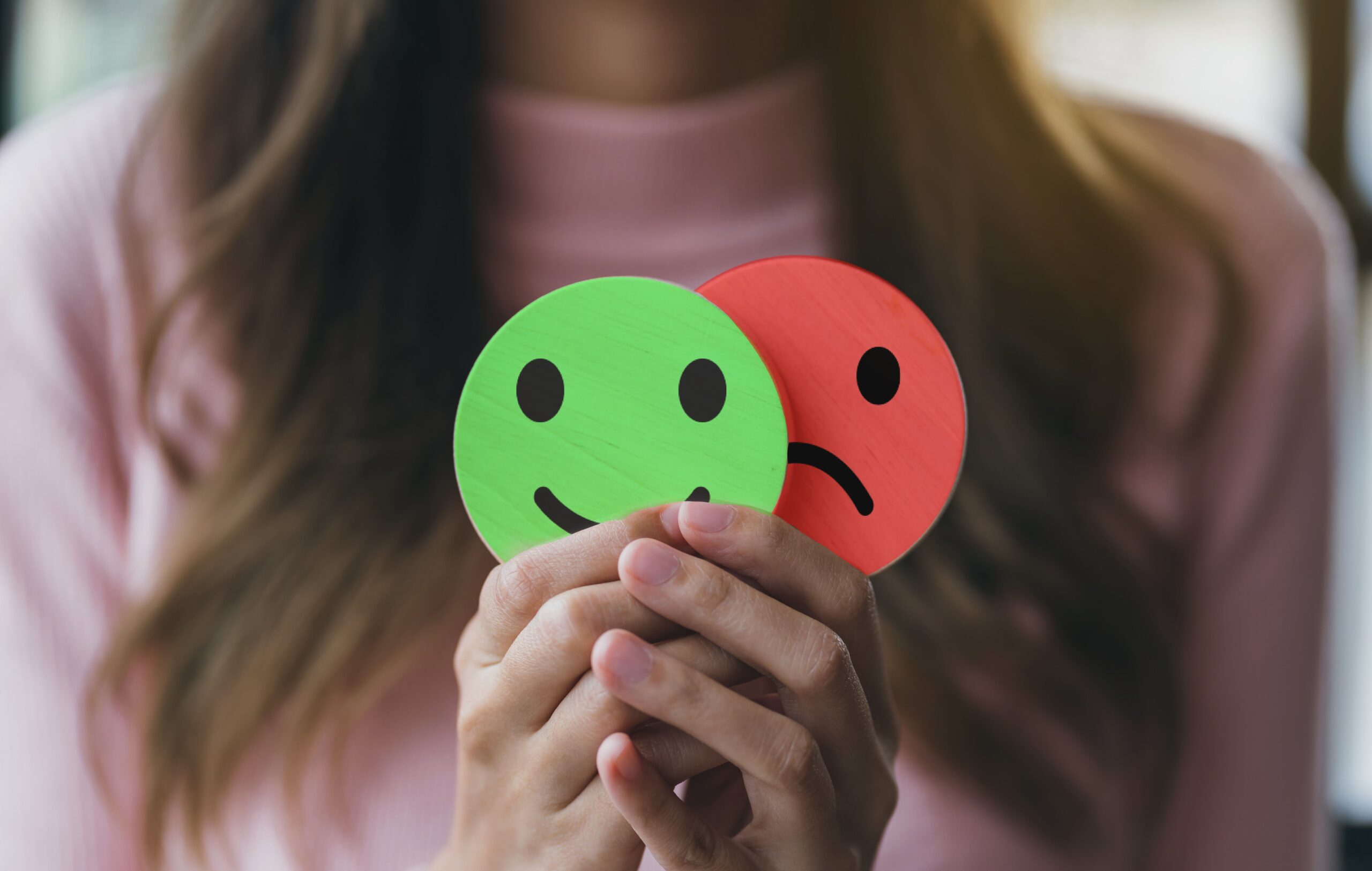Healing hounds: Clinic’s canine greeters help relieve pre-therapy patient anxiety
With a wag of their tails, dogs — and other furry creatures — can help humans relieve the anxiety associated with therapy and other medical appointments
On a typical visit to the New Opportunities for Wellness (NOW) behavioral health clinic, you might be greeted in the lobby by the likes of Lady AnnaBella, a Shih Tzu, and her owner, Sandra Olsaver.
The mission of the dozens of teams of volunteers from PAWS (pets are wonderful support) for Service and from Therapy Animals of San Antonio that routinely visit the clinic is to help alleviate the anxiety patients may have while waiting for their therapy appointments.
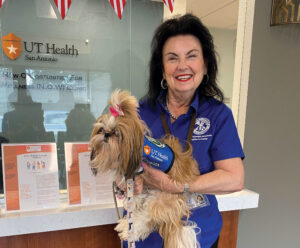
Another benefit of Healing Hounds — the official name of the program — is that the mere presence of these four-legged ambassadors can create a more productive therapy session by helping patients relax, according to clinic director Megan Fredrick, MA, LPC-S.
The NOW clinic, funded by University Health through the Southwest Texas Regional Advisory Council, is a collaboration with The University of Texas Health Science Center at San Antonio and is open to any adult Bexar County resident in need of behavioral health treatment.
Healing Hounds is the brainchild of Meredith Stensland, PhD, LMSW, a health science center assistant professor of research in the Department of Psychiatry and Behavioral Sciences. The program is an offshoot of Dialysis Doggos, a research study conducted by Stensland in which dogs were used to encourage dialysis patients to attend grueling appointments and help improve symptoms of pain and depression.
“The study tested the therapeutic value of having therapy dogs visit an outpatient clinic,” Stensland said. “I got with Megan and thought, ‘Why can’t we try and implement it here at our outpatient psychiatry clinic?’”
For Fredrick, incorporating the Healing Hounds program at the NOW clinic just made sense.
“We started during the pandemic in 2020 to get people rapid access to behavioral health care — the care they need, when they need it,” said Fredrick. The global pandemic and its resulting isolation amplified the internal struggles and the self-doubt and self-judgment many people were experiencing, she added.
“When it comes to behavioral health, there is a lot of stigma, still,” said Stensland. “Having a smiling, friendly presence in the waiting room can make a really big difference.”
Cats and bunnies, too
Linda Porter-Wenzlaff, PhD, LPC-S, NCC, MSN, RN, a former health science center faculty member and now a director for Therapy Animals of San Antonio, said their volunteers go wherever invited and visit schools, libraries, hospitals, nursing homes and rehabilitation clinics.
“At a rehab center, a patient can walk a dog on a leash with their owner and the patient may pay more attention to the dog and walk further without a sense of discomfort or pain because the patient is engaging with the dog,” said Porter-Wenzlaff.
She’s been told by nursing home residents that their only physical contact is for medical purposes such as a blood pressure check or medication administration.
“But when the animal comes in, they hop in the bed with the resident and snuggle,” she said. “They tell me, ‘It’s the only time I have that wonderful positive touch.’”
She said the animal teams are comprised of not only dogs, but also rabbits and cats. Any domestic animal is eligible to participate in the program, and no one breed is more suited as a therapy animal over another. However, every animal and their owner go through a rigorous screening process every two years to ensure ongoing suitability, Porter-Wenzlaff said.
“We made a decision very early we were going to follow national standards and best practices,” she said. “It’s a matter of safety and ethics for all involved.”
Fit for duty
Training animals in obedience is the responsibility of the owner, as is maintaining regular veterinary checks and grooming. When owners believe their animal is ready, they go through the evaluation. Part of that involves testing a dog’s basic obedience skills and ability to remain calm while being bumped and having its tail pulled. They likewise are observed while the organization’s staff make noise and use equipment typically encountered in the clinic, nursing home or school setting. The relationship between the dog and owner is also evaluated.
“The animal has to look to the owner for direction and support. The owner has to know their animal well enough to anticipate what they need,” said Porter-Wenzlaff.
When the dog and owner are certified, they are encouraged to visit facilities near their home.
“It works best if they go with a population they want to be with,” Porter-Wenzlaff said. “We have more requests than we can fill, so we have a long list of places and facilities to choose from.”
Mood booster
Porter-Wenzlaff’s experience as a therapy dog owner is nothing new to the retired nurse. While working as a young nurse in the 1970s with pediatric cancer patients, she noticed the children missed their animals despite visits from their families. Porter-Wenzlaff’s solution was to sneak a dog into the hospital.

“I brought the dog up through the back stairway, ran into the patient’s room, closed the door and thought I made it,” she said. “Within 15 minutes, there were maybe 20 people visiting the dog. I realized how much the animal visit impacted the patient and the physicians, residents and nursing staff.”
Later in her nursing career, as a professor at UT Health San Antonio’s School of Nursing and as a practicing psychotherapist, Porter-Wenzlaff continued to use animals as a therapy to help patients and to teach students the value of therapy animals.
“When the students of the graduate elective course I taught at the nursing school returned from their required observations, I would tell them, ‘Now you see why we do this work.’ The impact is more than you would think.”
If you own a registered therapy dog and are interested in making visits to the clinic, call 210-450-7222, or email nowclinic@uthscsa.edu.
Under one woof
The New Opportunities for Wellness (NOW) clinic, the Transitional Care Clinic (TCC) and all child, adolescent and adult psychiatry services of The University of Texas Health Science Center at San Antonio are now co-located at the UT Health San Antonio Behavioral Health and Wellness Center. 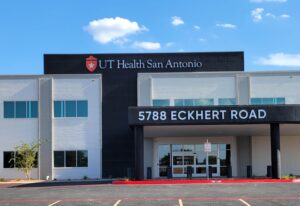
“The idea was to have all the services in one place so we can work together as faculty and clinicians so that individuals get the behavioral health needs for them and their family members met all in one place, without fragmentation or big gaps in care,” said Megan Fredrick, MA, LPC-S, director of the NOW clinic.
The conditions of adult and adolescent patients using the university’s services range from depression to isolation, said Fredrick. Adult stressors may include the economy, family situations, grief and loss, as well as serious mental health conditions. Adolescents face similar stressors with the added burden of fitting into their social groups and the impact of social media or school pressures.
“The pressure of society is harsher on kids than it used to be,” noted Fredrick. While in general, psychiatry may have historically experienced longer wait times, the NOW clinic — and the new NOW for Adolescents clinic — will find availability for patients within the week, said Fredrick.
With the additional services in one location, the Healing Hounds program has likewise expanded to include visits to all patients in the center. Between January 2023 and August 2024, hounds and their handlers completed more than 2,700 visits with patients or their family members.
How hounds help
Ample research points to the ways that animals help us, including stress reduction, social support, and even changes in hormones that regulate mood and pain, said Meredith Stensland, PhD, LMSW, a UT Health San Antonio assistant professor of research in the Department of Psychiatry and Behavioral Sciences.
 Animal therapy is not a new idea. According to the Alliance for Therapy Dogs, the ancient Greeks used horses to lift the mood of sick patients. In the 1940s, sick and injured veterans took care of farm animals to ease war-related trauma. Perhaps the first formal use of animals as part of therapy began in the 1960s when Boris Levinson, PhD, a New York City clinical psychologist, discovered that his sessions with children were significantly more productive when his dog, Jingles, was present. With the publication of his book Pet-Oriented Child Psychotherapy, Levinson introduced many more practitioners to the concept of the dog as a co-therapist.
Animal therapy is not a new idea. According to the Alliance for Therapy Dogs, the ancient Greeks used horses to lift the mood of sick patients. In the 1940s, sick and injured veterans took care of farm animals to ease war-related trauma. Perhaps the first formal use of animals as part of therapy began in the 1960s when Boris Levinson, PhD, a New York City clinical psychologist, discovered that his sessions with children were significantly more productive when his dog, Jingles, was present. With the publication of his book Pet-Oriented Child Psychotherapy, Levinson introduced many more practitioners to the concept of the dog as a co-therapist.
Hope for nursing home residents: Improving dental care for elders
A program providing free dental treatments for Central and South Texans now educates nursing home staff to maintain the oral hygiene — and the healthy smiles — of those in their care
The inspiration for a multimillion-dollar oral health program for nursing home residents happened long before Suman Challa, BDS, MPH, began studying dentistry.
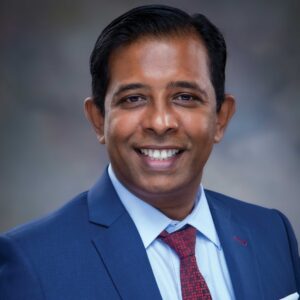
“I was very close to my grandparents and spent a lot of time with them, so senior health care was close to my heart,” said the associate dean of the School of Dentistry. “When I began work on my master’s in public health, I chose oral health in nursing homes as a topic to study.”
Vinaya Kundapur, BDS, MDS, shared a similar relationship with her grandparents, which inspired her to specialize in geriatric dentistry.
“My grandmother was my first patient. I made her first dentures,” said Kundapur, assistant professor/clinical in the school’s Department of Comprehensive Dentistry.
“It was hard on her because I didn’t know what I was doing, and I was hurting her. But she told me not to stop. She said she could tolerate the pain because I was learning, and she wanted me to learn in the best way.”

Challa and Kundapur took the love, compassion and empathy they learned from their grandparents and turned it into an oral health program conducting more than 5,000 dental procedures at 58 nursing homes across South and Central Texas.
“We were there to provide complete comprehensive care for patients who may not have seen a dentist in 15 to 17 years,” Kundapur said.
HOPE, or the Holistic Oral Health Program for Elders, was a three-year program funded by a $5.7 million grant from the Centers for Medicare and Medicaid Services (CMS) that provided comprehensive dental care for nursing home residents without dental insurance. While funding for the clinical phase of the program ended in 2023, a smaller CMS grant has allowed it to transition into an education program for nursing home staff and caregivers.
HOPE on the road
During its clinical phase, the HOPE program consisted of a team of 10: two dentists, two hygienists, two public health students and four dental assistants. Together they covered a wide geographic area across Bexar County. Each patient’s care began with a cleaning and an assessment to determine the scope of work needed.
“We would prioritize what is best first. If they had an infection, we would ensure that was taken care of,” Kundapur said. The team performed every procedure, from extracting teeth — sometimes as many as six to 10 teeth or root tips in a day — to making dentures. Many residents had compromised oral health due to dry mouth caused by medications and a history of significant medical conditions, Kundapur said.
“After scaling, we applied silver diamine fluoride as a preventive measure whenever possible. Root caries, often accompanied by periodontitis and tooth loss, were prevalent. We prioritized restoring these teeth. The only procedure not conducted was dental implants,” she said. “I would tell my patients that wrinkles and graying are part of aging. Graying is inevitable, but tooth loss is not.”
The team’s daily schedule was long and subject to unexpected change. After seeing all patients at one nursing home, the team moved on to another. Some days were more challenging than others.
“There were moments when the team would go back to see a patient they saw six months ago and found the patient had passed away,” Challa said. On those days, the team members leaned on each other for support. “But we knew in that last six months we helped them and made sure they had a better quality of life until the day they passed away.”
Improving health
According to Challa, the most significant outcome of the program was the difference healthy teeth made in the patient’s overall physical and mental health.
“When you are improving oral health, you are improving overall health,” said Challa. He remembers one resident who isolated herself in her room with the lights turned off so other residents wouldn’t visit her and see the extensive work she needed on her teeth. When the dental work was completed, “she became a social butterfly,” he said.
“We changed their emotional well-being and improved their overall health with better nutrition and taking away the pain they endured,” Challa said. “It was transformative for them.”
One unexpected outcome was how the nursing home residents positively received the team.
“Typically, no one is jumping for joy to make an appointment with the dentist,” Challa said. “[The residents] were excited about making an appointment with us.”
Extending HOPE’s impact
With the HOPE program transition to an educational service in 2023, one dental hygienist and one dental assistant now teach nursing home staff how to maintain good oral hygiene among their patients. The team of two meets with nursing home staff quarterly to provide themed training based on the real-life cases they saw during the clinical phase of the program to illustrate preventative measures. For instance, one training may show how to recognize infection, while another covers denture maintenance.
Another goal of the program is to help nursing home staff recognize a potential dental emergency or how to prevent one. The team also provides each patient with denture care kits and oral hygiene supplies. Kundapur said that if the program had been done in reverse order, it might not have been as successful.
“Providing this oral hygiene education to the caregivers will help [patients] keep what we treated,” she said.
Assessing oral care for the elderly
65+
According to the National Council on Aging, adults aged 65 and older are one of the fastest-growing populations in the United States.
80.8 million by 2040
The 65+ population will number 80.8 million by 2040. Yet among those in this age group, oral health is often neglected because of a lack of insurance or access to care.
10,000
During the past year, School of Dentistry students and the school’s dental practice, UT Dentistry, treated close to 10,000 older adult patients.
65%
Of those nearly 10,000 older adult patients treated, 65% did not have insurance.
Non-invasive treatment provides relief for osteoarthritis pain
Patricia Abrego’s journey to a clinical study using radiation therapy to relieve osteoarthritis joint pain began when she was 10 years old.
Like most children living in a state where snowy winters were a norm, Abrego was doing what most kids do: playing.
“The leaves were covered with snow, and they made good bumps to skid on,” she said. “I skidded on one and tore my meniscus in my left knee,” said the 69-year-old semi-retired nurse and amateur artist.
Rather than visiting a doctor, her mother helped her relieve the swelling, and the pre-teen went on with her active life. At 12, during a softball game, she was picking up a ground ball, and the already injured meniscus tore further.
The meniscus is two C-shaped pieces of cartilage that provide cushion between the shinbone and the thighbone. According to the Centers for Disease Control and Prevention, tearing the meniscus is one of the most common injuries to the knee.
For the next 34 years, Abrego lived with the pain and discomfort of the tear. At 46 years old, she underwent a complete knee replacement on the left knee. However, Abrego said that her right knee was damaged by taking over the work of the injured left knee. In 2016, she underwent a complete knee replacement of the right knee.
“But that one never worked correctly,” she said. “So I’ve been dealing with pain for a long time.”
She tried various prescription and over-the-counter drugs to relieve the pain. After briefly using hydrocodone for pain relief, she chose to wean herself off the opioid and began a drug regimen of 1,000 milligrams of ibuprofen three times a day. Then, one of her physicians told her about a study by a colleague, Neil Newman, MD.
Newman, a radiation oncologist for Mays Cancer Center, home to UT Health San Antonio MD Anderson Cancer Center, joined a national study on the use of radiation to relieve joint pain and eliminate the use of pain medications.
“We are studying the use of very low doses of radiation, which is not invasive, to stop some of the inflammatory pain,” he said. “We are including patients who are 50 or over and have a pain score of at least four out of 10 and above.”
Newman said most patients with osteoarthritis, a degenerative joint disease impacting more than 33 million adults across the country, use over-the-counter anti-inflammatory medications to relieve pain. As the disease progresses, however, treatment can include opioids or steroid and gel injections.
“But those injections must be repeated multiple times and can be quite an unenjoyable experience,” he said.
Newman said the use of radiation to treat joint pain is nothing new. It was used in the 60s and 70s in the United States, but was replaced by medications and steroid injections.
“I think, culturally, the use of radiation, unfairly, had a negative connotation. I think it led to a big fear that we should use radiation for cancer only, even though it does have some benign uses,” he said.
While doctors in the U.S. stopped using radiation as a treatment for joint pain, European doctors continued to use it, especially in Germany, Newman said.
“What is great about that is now we have a lot of data for at least 30 years proving two key points. No. 1 is that radiation can help with pain, take people off pain medications, and provide relief,” he said. “And, most importantly, we know that low doses of radiation in an older population will not increase the risk of a secondary cancer from radiation.”
Newman said the dose of radiation used during treatment is 40 times lower than he would use with a patient he’s treating for cancer. During the treatment, patients receive six seconds of radiation treatment on the joint two to three times per week on nonconsecutive days. Then, patients have follow-up visits for six months. The treatment can be done on joints in the knees, hips, elbows, shoulders, fingers and ankles.
After receiving treatment, Abrego said the pain in her right knee did improve.
“I’ve noticed that at three months, my pain was at a five, but it had gotten down to a two or one. The left knee is at a four,” she said, referencing the 0-10 pain scale frequently used in health care. “I’m not taking high doses of ibuprofen. I’m only taking 1,000 milligrams of ibuprofen a day, and some days, I don’t take it at all.”
Newman said that while Abrego and others are participating in the study, receiving the treatment is not contingent on participation. However, Abrego highly recommends participating.
Abrego said her younger sister, who would have turned 65 this year, passed away at 47 years old after a diagnosis of chronic myelogenous leukemia with the Philadelphia-chromosome. With very little hope of survival, her sister chose to participate in a clinical trial for Imatinib, a medication now commonly used to treat the cancer.
“It bought her seven years. She left a 10-year-old daughter behind instead of a three-year-old. I consider her my hero,” she said.
Alternatives for treatment-resistant depression offer hope
Carey Calvin was at the lowest point in his life two years ago.
After a childhood filled with physical and emotional abuse and years of antidepressant medications and therapies that were not working, Calvin was ready to give up.
“It was the first time I felt like my family and the things closest to me weren’t enough,” he said.
Calvin’s years of agony were finally alleviated after undergoing electroconvulsive therapy (ECT) at UT Health San Antonio.
ECT, esketamine — a drug therapy — and repetitive transcranial magnetic stimulation are three alternatives for patients suffering with treatment-resistant severe depression. These treatments fall under a branch of psychiatry known as interventional psychiatry.
Over the next year, Melissa Martinez, MD, a psychiatrist at UT Health San Antonio, hopes to meet with internal medicine and family practice physicians about these alternatives to antidepressants and therapy.

“Those are the providers that often see patients with depression first,” she said. Knowing what alternatives are available when the antidepressants don’t work could be helpful.
ECT offers relief
While Calvin’s diagnosis of complex post-traumatic stress disorder and severe depression with panic attacks made him an ideal candidate for ECT, initially he was slightly hesitant.
“It was more extreme than anything I’d done before, but it was either that or death,” he said.
ECT was first used in the late 1930s; however, its depiction in horror films has stigmatized the treatment. Unlike in films, patients are sedated and their muscles are relaxed during the procedure. Then, short electrical pulses are used to induce a seizure.
While the outpatient visit may last two to three hours, Martinez said, the procedure is no more than 10 to 15 minutes. She said the procedure is gaining popularity since it has an 80% response rate. The primary risk of ECT is memory loss.
“Anyone who has a seizure — whether triggered purposely or through a seizure disorder — has difficulty remembering anything that happened around the time of the seizure,” Martinez said. “We minimize the risk of memory issues with the newer techniques we use, and people are emerging from the procedure with less confusion and [fewer] memory problems.”
Sitting in a local diner, Calvin is animated and candid as he speaks of the years he’s struggled with his illness — an illness that induced horrific nightmares every night.
“After I recovered from my first ECT treatment, those nightmares were removed from my brain like a piece of a puzzle. I haven’t had a nightmare since,” he said.
Esketamine treats stubborn depression
Diana Dannemiller said she felt different throughout her life. Everyday disappointments and struggles seemed to affect her more than her peers.
“Going all the way back to kindergarten, I remember always being told I was so dramatic,” she said.
Two years ago, Dannemiller said she chose to focus on her health. In conjunction with severe depression, she suffered from debilitating migraines. She began to research the use of ketamine to help with the pain. She found discussions in online forums about a correlation between migraines and depression. After speaking to her therapist, she was introduced to Martinez.
“I didn't want to be in a dark place anymore. I didn’t want all that negative stuff. Every conversation I had with someone was negative,” she said.
Ketamine is a Schedule III non-narcotic substance under the Controlled Substances Act, according to the U.S. Drug Enforcement Administration. The drug is a dissociative anesthetic with hallucinogenic effects approved for use in humans and animals. In 2019, the U.S. Food and Drug Administration approved esketamine, a form of the drug, to treat severe depression.
According to Martinez, the medication is administered as a nasal spray and given to patients twice a week for four weeks at their clinic. Per FDA requirements, patients are monitored for two hours after its administration.
“We monitor the patient’s blood pressure, heart rate and breathing,” Martinez said. “It’s a very safe treatment, but we are still required to monitor patients for two hours. Unlike other medications for depression, the patient never takes the esketamine home to take on their own.”
Martinez said that patients eligible for treatment must have failed two other forms of treatment. She said the treatment’s success lies in its ability to work differently than oral medications.
“Usually, antidepressants affect what’s called serotonin or norepinephrine, and sometimes dopamine. But esketamine works on a whole different system, the glutamate system. It acts as an N-methyl-D-aspartate receptor antagonist. So, it addresses depression from a whole different angle,” she said.
Dannemiller said that after her second treatment, she began to see positive effects.
“I remember getting home the next day and feeling alive and awake,” she said. “Instead of feeling sorry for myself, I can recognize the root cause of things and process them. I see things more clearly.”
Another non-invasive treatment
Repetitive transcranial magnetic stimulation involves placing magnets on the head to create powerful magnetic fields. Martinez said the magnetic pulses stimulate brain cells to fire.
“The thought is that the left side of the brain, the dorsolateral prefrontal cortex, is not firing well,” she said. “We put the magnets over that part of the brain and trigger that area to start firing.”
Martinez said while treatments for depression have evolved over the years, there is still no way to determine who will respond to which treatment. She said one challenge is that physicians and scientists don’t know the underlying cause of depression.
“It’s almost like a cold. We’re still treating the cough, runny nose and body aches. But we’re not treating the underlying virus,” she said. “Some theories are that these common symptoms we are calling depression may be due to multiple different causes, which is why some people respond to some medications but not others.”
A brighter future at last
Calvin’s response to ECT is a success that has changed his life. He said when he met Martinez for the first time, he was disheveled and despondent.
“I felt like the particles of sunlight hitting my skin were painful. I was done with this place,” he said. “Now, this is as close to cured as I’ve ever felt about anything. It’s been so life-changing. I don’t have the adequate words for it, and it’s only getting better.”
Calvin, who is pursuing a career in physical therapy, said he’s motivated by the devotion of his wife and 13-year-old son.
“I want my son to have the example of a father who will do everything for his family despite the pain he’s in. I want him to know I will go through anything for him. I want to show him that nothing is ever truly hopeless,” he said.
Click here to learn more about alternative treatments for severe depression.
Deep brain stimulation keeps amateur artist’s hands steady
Sitting in a diner, John Lattimore straightens his arm and hand. Both are steady. Five years ago, that was not the case.
Throughout his life, Lattimore has lived with essential tremors. The neurological condition he shares with his siblings includes shaking hands, arms, head, trunk and vocal cords. In 50%–70% of cases, it’s an inherited trait, according to the National Institute of Neurological Disorders and Stroke.
“Growing up, we would sit at the dinner table, and we were all constantly pounding it, and the table was shaking,” he said.
While serving in the military and throughout a 38-year nursing career, Lattimore could control the tremors and move forward with his life. Married for 54 years, a father and grandfather, the tremors did not disrupt his life until 2019.
“When I was working, I wasn’t aware of it, and the tremors were controlled,” he said. “But when I was home and focusing on it, it would be worse.”
After retiring and indulging in his favorite hobby of yard work and a new hobby, watercolor painting, he found he couldn’t hold gardening tools and paintbrushes steadily. His tremors were worsening.
“There were times when it was just so frustrating,” he said.
After meeting with Alexander Papanastassiou, MD, a UT Health San Antonio neurosurgeon, Lattimore chose to treat his tremors with deep brain stimulation surgery.

What is deep brain stimulation?
Deep brain stimulation, or DBS, is the placement of electrodes in the brain, specifically in the thalamus for essential tremor. The thalamus is an egg-shaped structure found in the middle of the brain near the brainstem. It acts as a relay station for movement and sensory information.
“We place the electrodes in the brain to stimulate the thalamus, and it has the effect of quieting it down and controlling the tremors,” said Papanastassiou. “It's been the treatment of choice since the 1990s.”
According to Papanastassiou, the electrodes are connected through wires attached to a battery-powered generator in the chest wall. The advantage of DBS is that it’s reversible.
Broad benefits
Deep brain stimulation at different targets is not only used for essential tremor but also for patients with Parkinson’s disease, epilepsy, obsessive-compulsive disorder and dystonia, according to the American Association of Neurological Surgeons.
With a .5% chance of permanent neurological deficit from a stroke or hemorrhage, Papanastassiou said the treatment is relatively safe. Infection is a risk of the surgery, and removing the device is required to treat the infection.
“Most patients who have an infection can’t wait to get it back in and don't want to wait the three months it takes to be ready for re-implantation,” he said.
The surgery is typically 3–4 hours, and patients are traditionally awake. Lattimore said the idea of being awake during brain surgery gave him pause.
“I said no. But Dr. Papanastassiou said I had to be awake because he had to talk to me,” Lattimore said. “When they wheeled me into the surgical suite, I thought, what in the world is all that? I have never seen so many machines in a surgery suite.”
Papanastassiou said patients are awake during the surgery to ensure the correct brain area is stimulated. However, he and his team are acquiring advanced imaging protocols to allow the implantation of thalamic deep brain stimulation electrodes while the patient sleeps. Papanastassiou said the procedure is already available for other targets, including those used for Parkinson’s disease.
Today, Lattimore is grateful for the surgery.
“It changed everything. I couldn't pick up a cup. Now, I can do all the little things I didn't even think about,” he said.
Click here to learn more about DBS treatment.


